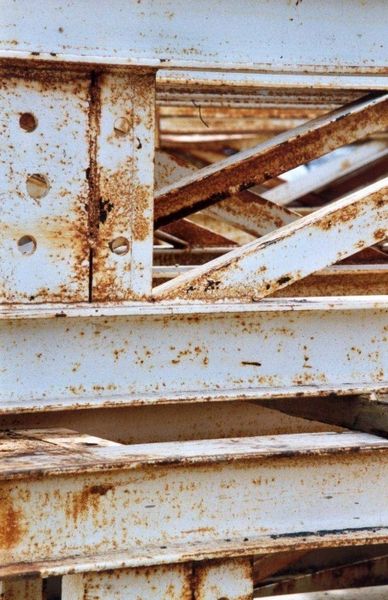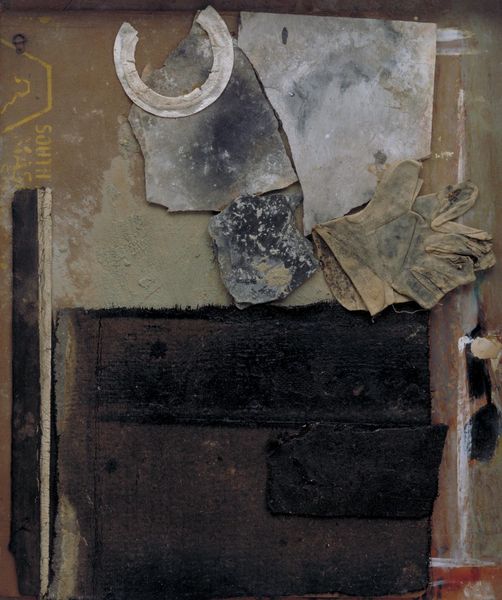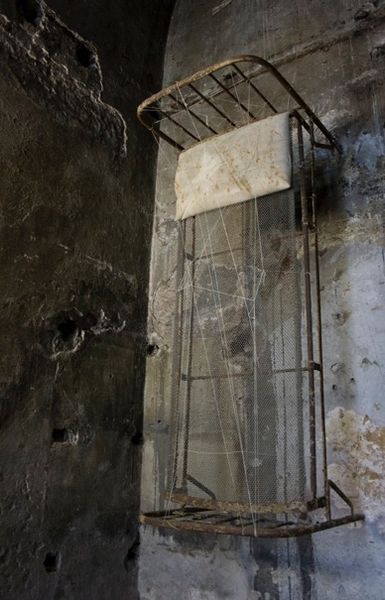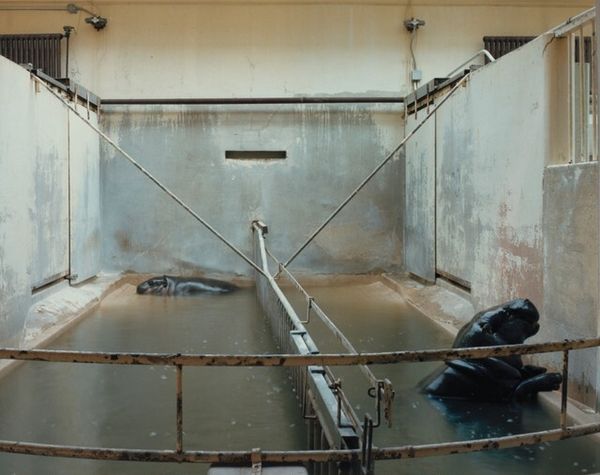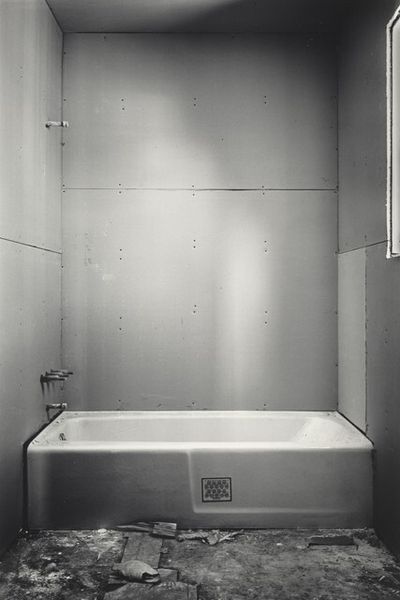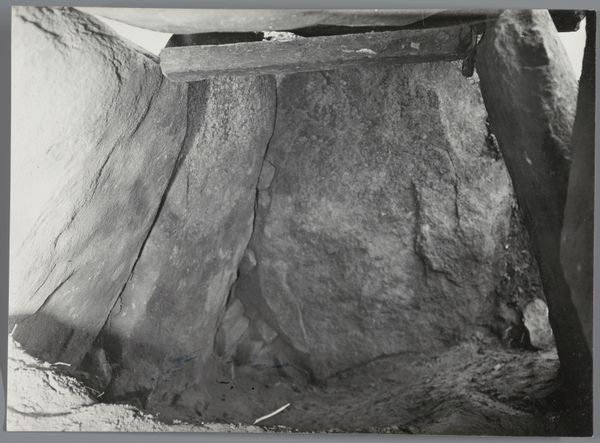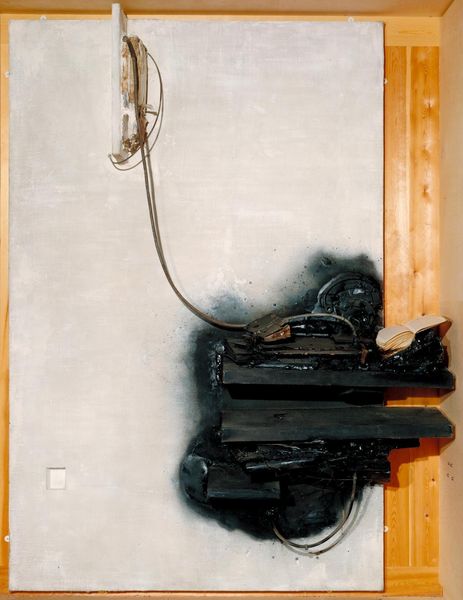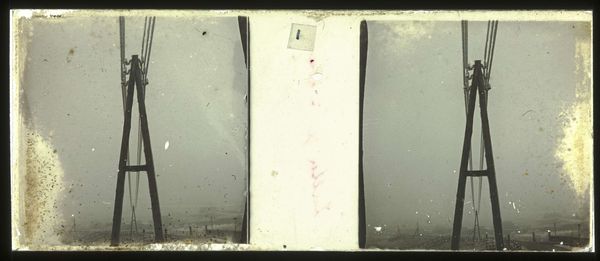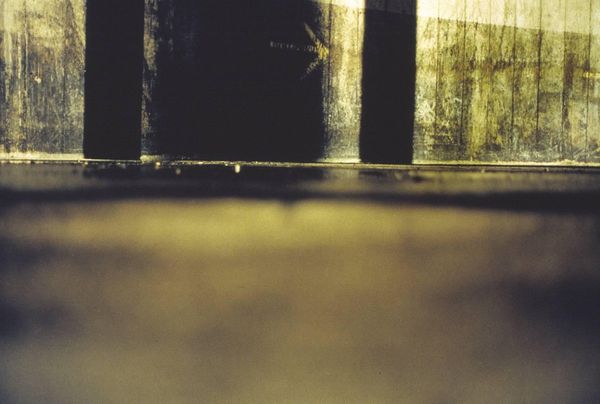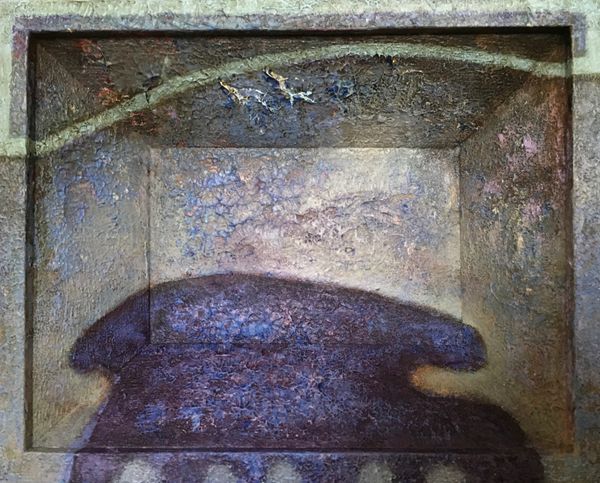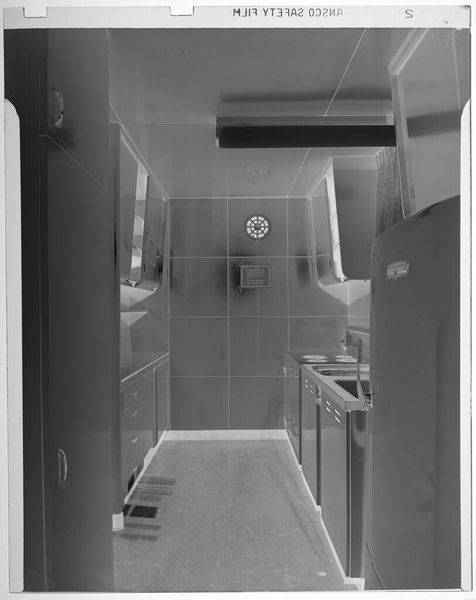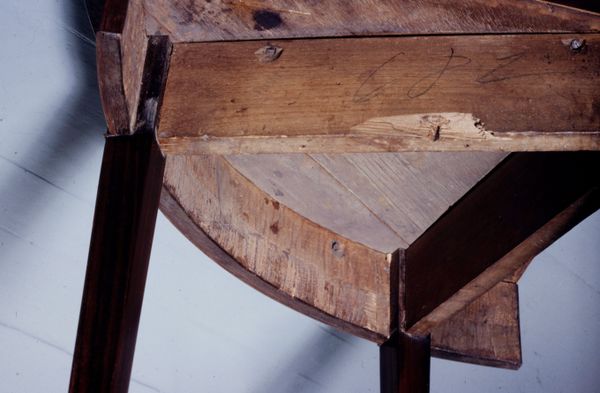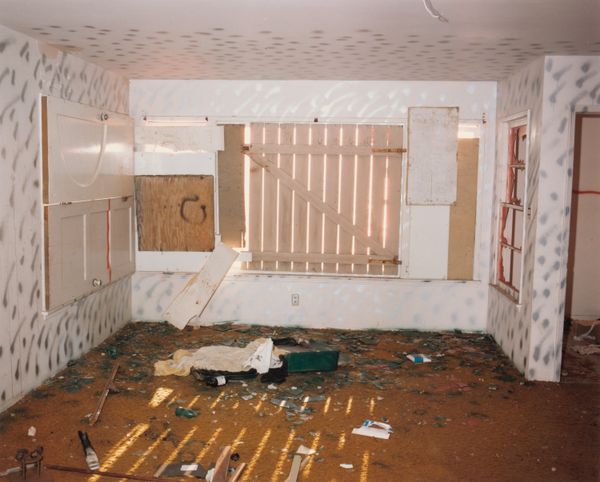
Dimensions: unconfirmed: 400 x 460 mm
Copyright: © Jeff Wall | CC-BY-NC-ND 4.0 DEED, Photo: Tate
Editor: Here we have Jeff Wall’s, "Diagonal Composition", currently at the Tate. It's a photograph, and I must say, it’s quite...gritty. What do you make of it? Curator: It's a fascinating meditation on the everyday, isn't it? Wall is known for elevating mundane scenes to the scale and detail of history paintings, forcing us to consider the overlooked corners of our world. Consider how the social structures create neglected spaces, and how imagery influences our perception of them. What kind of commentary might Wall be making? Editor: So, it’s not just a picture of a dirty sink, but a commentary on neglect and societal structures? I never would have seen that! Curator: Precisely. Wall challenges us to look closer, beyond initial revulsion, and consider the politics embedded within the image. It makes you wonder who is responsible for this space, and why it has been allowed to decay. Editor: I guess that’s what makes art so interesting! It’s never just about what you see on the surface. Curator: Exactly!
Comments
tate 7 months ago
⋮
http://www.tate.org.uk/art/artworks/wall-diagonal-composition-t07961
Join the conversation
Join millions of artists and users on Artera today and experience the ultimate creative platform.
tate 7 months ago
⋮
Diagonal Composition is a colour photograph of the detail of an interior. Like the majority of Wall’s images, it is displayed in a light box. It represents a balanced composition of dynamically intersecting and crossing parallel and diagonal lines, the result of viewing and framing the subject from a particular angle. Part of an enamel sink in the foreground is surrounded by a yellow formica surface, the lines of which are sharply defined by metal edging running parallel to the sides of the sink. The intersection of the metal strips at the rear corner of the sink is slightly to the left of the centre of the photograph. They frame a bar of soap and lump of white detritus lying on the formica next to the sink. To the right, a small dark shelf extends into the upper right side of the image, its rounded corner echoing the rounded corner of the sink in the foreground directly below it. Behind the shelf, a strip of light blue formica is nailed to the white wooden planks on the wall. White concrete below the shelf is brightly lit, revealing the trace of a cobweb hanging from the shelf’s metal trim. A vertical shadow on the right side of the photograph echoes the shadow inside the sink. Above the brown formica panel behind the sink is a plank of wood, its grain running at right angles to the printed grain of the formica. It is parallel to the metal strip at the back of the sink, the blue formica at the back of the shelf and the narrow dark margin at the upper edge of the white concrete. A piece of coarsely woven fabric draped over the wood disappears out of the picture frame and then reappears, hanging directly above the soap. The surfaces between the diagonal lines of the composition are discoloured with age and use. Splashes and smears of white, rust stains and two circular imprints left by objects standing on the shelf for a long time have a painterly quality. The photograph was taken in Wall’s basement studio. It is life sized.
